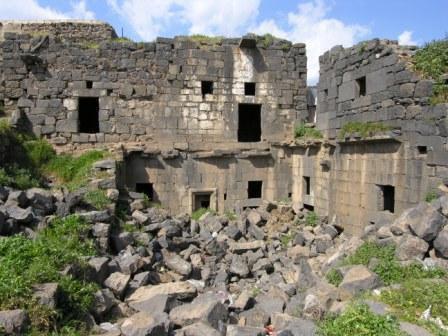 |
| ruins of ancient Naveh (Nawa), courtesy, Wikipedia |
During the time of Joshua, Naveh, as with the entirety of today’s governorate, was allotted to the eastern half of the Israelite tribe of Menashe. It was probably identical to the town of Nobah, mentioned in Numbers 32:42. It supposedly became the burial place of Shem, son of Noah, ancestor of the Shemiim, the Semites, and was also known as the dwelling place of the Hebrew prophet Job. Naveh had been a mostly Jewish hamlet for centuries but experienced a period of immense growth during the Roman and Byzantine eras. The city was mentioned in the 3rd century “Mosaic of Tel Rehov” (in the Bet She’an area of the Jordan Valley). In the 5th century, it was a seat of Torah learning and Rabbi Tanhuma bar Abba, amora of the 5th generation, lived there. Naveh was also referred to by the Byzantine Christian traveler and geographer George of Cyprus in his "Descriptio orbis romani" in the 7th century. It still contained a small Jewish community in the Middle Ages, but eventually, the Jews moved away. In the early 19th century, two German archaeologists discovered the ancient synagogue in the area and began to study its lintel above the doorway entrance. It was found that this lintel had been dated to the fourth to fifth centuries. In later years, archaeologists would come across numerous other findings, notably the discovery of basalt architectural artifacts dating to the Byzantine period and bearing Jewish symbols—most prominently the menorah.
No comments:
Post a Comment